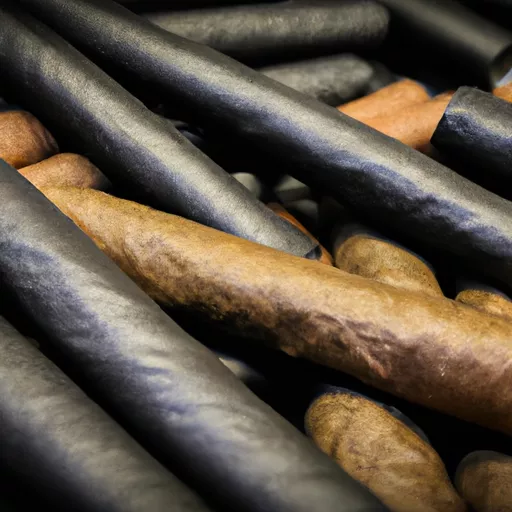black little cigars

As a lover of all things tobacco, I have always been intrigued by the world of little cigars. These miniature versions of their larger counterparts have a charm of their own and have gained a significant following in recent years. In this article, I will delve into the world of little cigars and explore their history, flavors, and popularity.
Let’s start with the basics – what exactly are little cigars? As the name suggests, they are smaller versions of cigars, typically about the same size as a cigarette. They are made with a blend of tobacco leaves, just like regular cigars, but are wrapped in homogenized or natural tobacco leaf instead of the traditional tobacco wrapper. This gives little cigars a slightly different flavor profile compared to cigars and cigarettes.
Little cigars have been around for centuries, with evidence of their existence dating back to the 17th century. During this time, tobacco was a prized commodity and was often smoked in the form of pipes or rolled into cigars. However, cigar production was a labor-intensive process, and many people couldn’t afford to buy or make them. This led to the creation of little cigars, which were cheaper and easier to produce.
Over the years, little cigars have undergone many changes, from being hand-rolled to machine-made, and from being primarily used for medicinal purposes to becoming a popular choice among smokers. They have also faced opposition and have been subject to regulations, especially in recent times due to concerns about youth access and health risks.
One of the things that make little cigars appealing to smokers is the variety of flavors available. Unlike traditional cigars, which are known for their natural tobacco taste, little cigars come in a wide range of flavors such as vanilla, cherry, chocolate, and even menthol. This makes them a popular choice among those who prefer a sweeter smoking experience.
Another reason for their popularity is their convenience. Little cigars come in small packs, making them easy to carry around and store. They also tend to burn quicker than regular cigars, which is ideal for those who don’t have a lot of time to dedicate to a smoke break. Additionally, little cigars are often cheaper than traditional cigars, making them an attractive option for budget-conscious smokers.
However, like any tobacco product, little cigars come with health risks. Despite their small size, they still contain nicotine and other harmful chemicals. This, coupled with the fact that they are often flavored and marketed towards young people, has caused concern among health experts. Furthermore, little cigars are often seen as a gateway for young people to start smoking traditional cigars or cigarettes.
Despite the controversy surrounding little cigars, their fan base continues to grow. Many smokers enjoy the convenience and variety of flavors they offer, while others appreciate their resemblance to traditional cigars but in a more accessible form. However, whether you choose to smoke little cigars or not, it’s important to be aware of the potential health risks and to smoke responsibly.
In terms of smoking experience, little cigars are different from both cigarettes and traditional cigars. Unlike cigarettes, which are usually inhaled, little cigars are meant to be smoked more like traditional cigars. This means taking smaller and more frequent puffs, rather than inhaling deeply. Little cigars also tend to have a slower burn rate than cigarettes, allowing for a more leisurely smoke.
When it comes to pairing little cigars with beverages, the possibilities are endless. Like traditional cigars, little cigars can be enjoyed with a variety of drinks, from coffee and whiskey to wine and rum. However, due to their smaller size and often sweeter flavor, they pair well with lighter and sweeter drinks. A glass of iced tea or an ice-cold beer can be the perfect accompaniment to a little cigar on a hot summer day.
In terms of etiquette, smoking a little cigar is similar to smoking a traditional cigar. It’s important to respect those around you and avoid blowing smoke directly in their faces. Additionally, just like with traditional cigars, little cigars should be fully extinguished before disposing of them and should not be flicked or tossed aside. Properly disposing of your little cigar is not only respectful but also helps to prevent accidental fires.
In conclusion, little cigars may be small in size, but they have made a big impact in the world of tobacco. They offer convenience, variety, and a unique smoking experience. From their humble beginnings to their current popularity, little cigars continue to fascinate and divide opinions. As with any tobacco product, it’s important to smoke responsibly and be aware of the potential health risks. So next time you reach for a little cigar, take a moment to appreciate its history, flavors, and appeal.